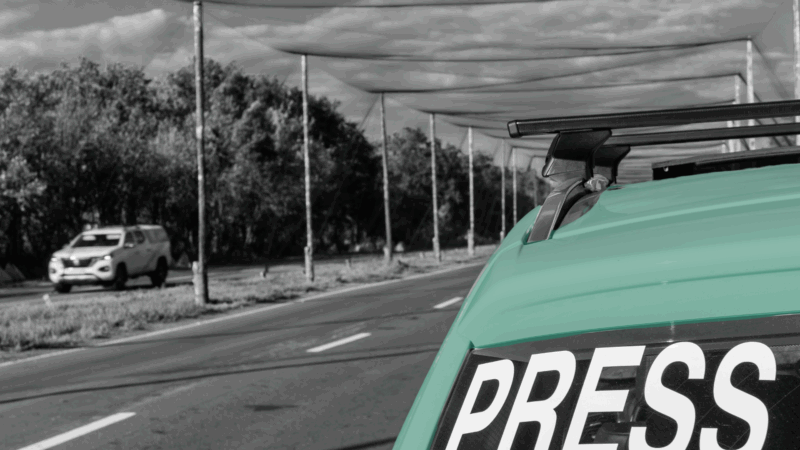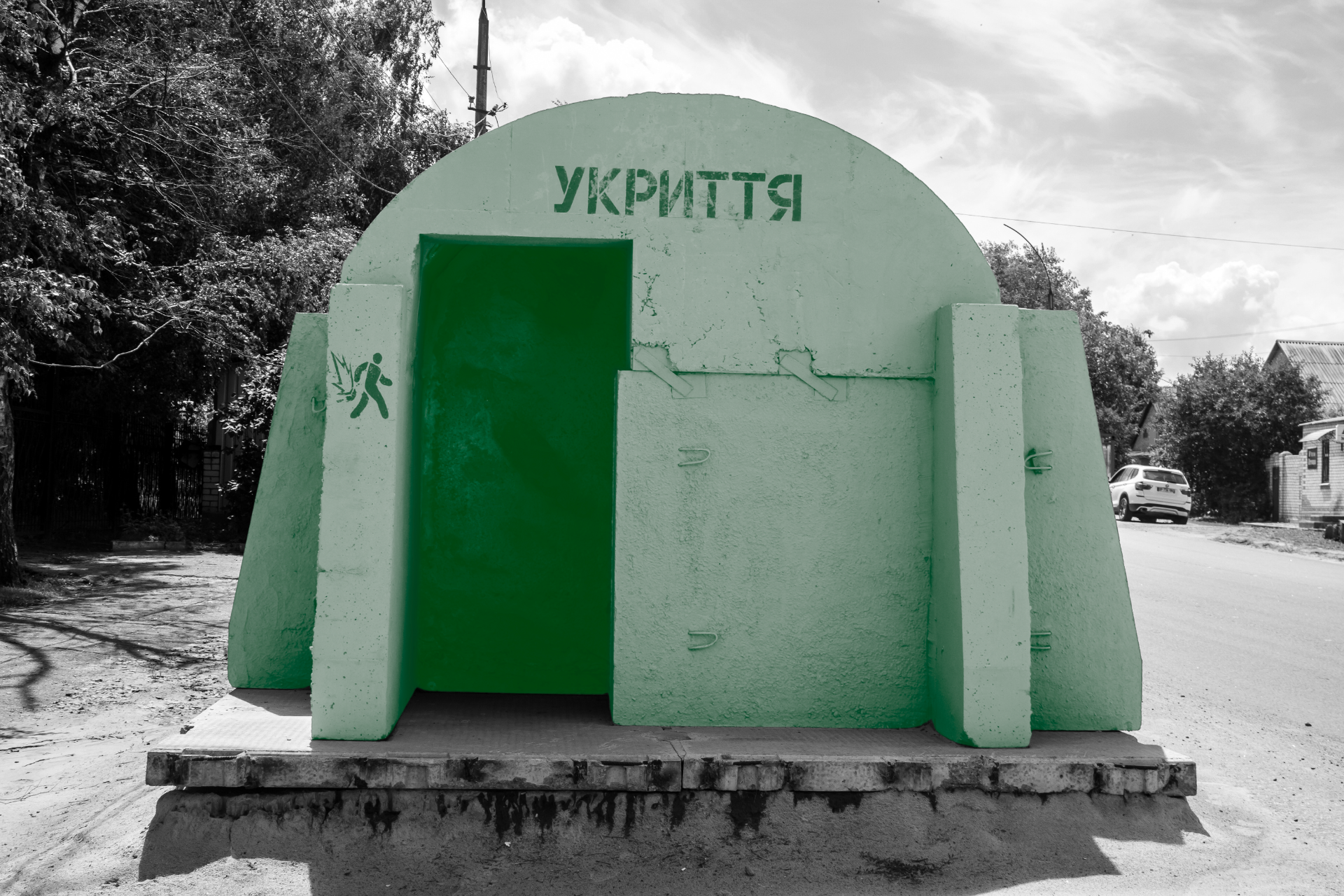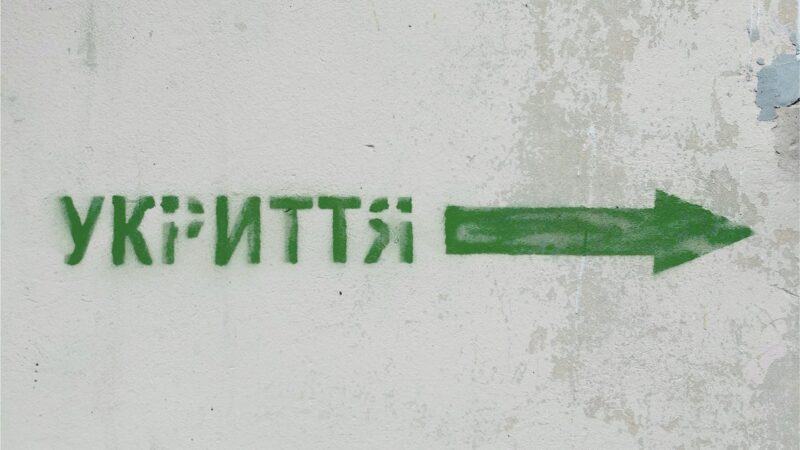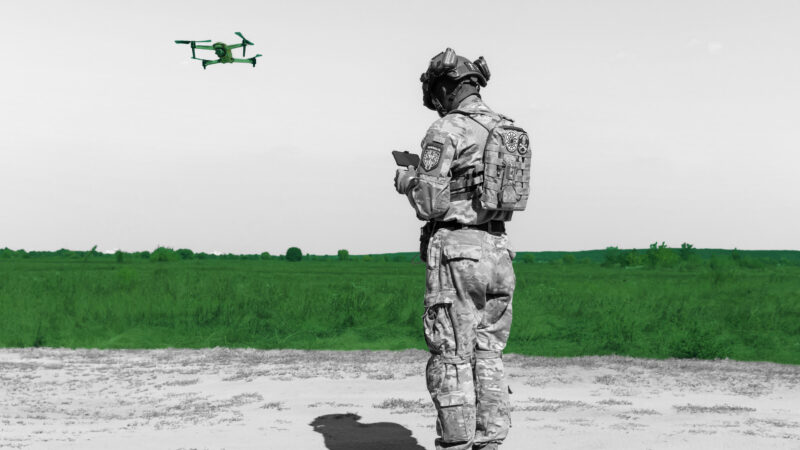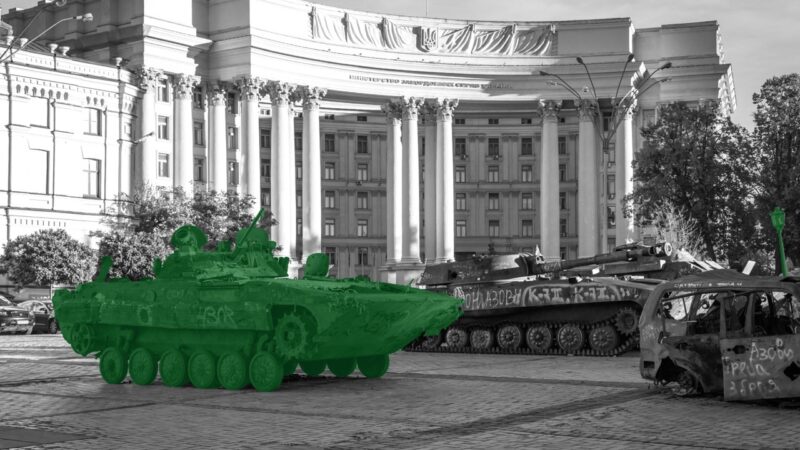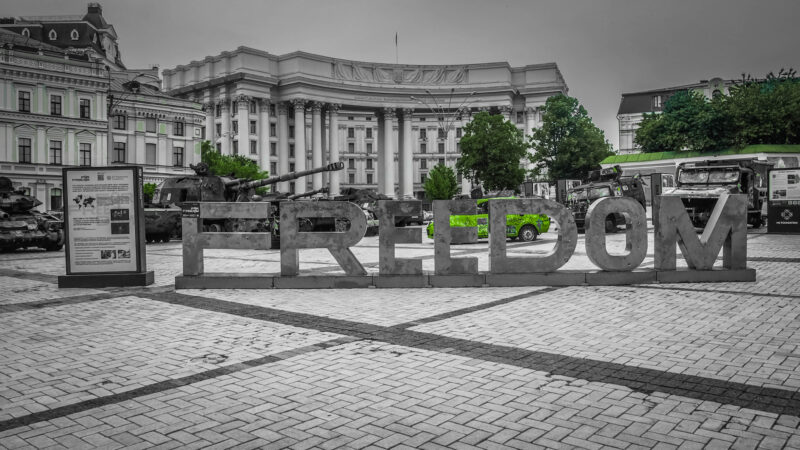The Russian War against Ukraine: Cyclic History vs Fatal Geography
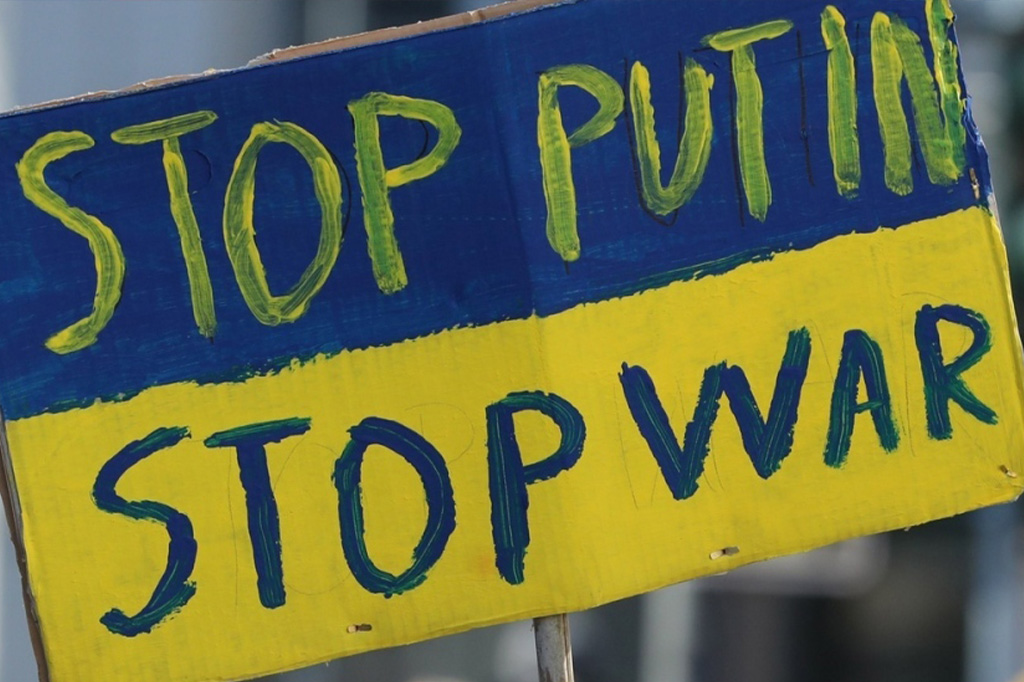
History seems to be repeating itself, not as farce but as yet another tragedy. It reveals many of its driving forces at turning points. Those who manage to notice them, get the opportunity to rethink the past from a different perspective. The Russian-Ukrainian ongoing war of 2022 is one such fateful event. I am confident it will start a new chapter not only in history but also in the historiography of Ukrainian-Russian relations. Historians are usually more comfortable when they keep a distance from the object of their studies. I have no such distance; I am a deeply involved observer. When this essay is published, a reader will be better informed than the author about the course of events in Ukraine. However, although many details and aspects of the war remain in the shadow, I have a strong feeling of déjà vu, in particular when it comes to Russia.
Tibor Szamuely once stressed: “Of all the burdens Russia has had to bear, heaviest and most relentless of all has been the weight of her past” (qtd. in Hedlund 267). The burden is heavy indeed because Russian history is cyclical. Over and over, Russia reproduces similar patterns of political, social, and cultural life that grew from the old Byzantine matrix. The persistence of geopolitical and imperial-religious foundations in Russian identity is truly impressive. During upheavals, a thin layer of Western polish peels off the Russian face, and she turns to Europe her “ugly Asian mug,” as Aleksandr Blok put it in 1918 (Blok 79).* This is when the real, inner (glubinnaia) Russia reveals herself in the gloomy carcass of the Muscovite Tsardom.
The “inner” Russia never was and never will be part of Europe. It always was a “garrison state,” a citadel of Orthodoxy, which remained in a state of permanent war both at its borders and beyond. It is to this Russia that Putin appeals when he calls his subjects to unmask “national traitors” who are guilty of looking to the West. Such xenophobic rhetoric at the highest political level has not been heard since Stalin’s campaign against the “rootless cosmopolites.” However, it is not difficult to find similar anti-Western paroxysms of hatred in each epoch of Russian history. The structure of Russian history has not changed since the Middle Ages. The same may be said on the Russian method of warfare , which has always been distinguished by utter brutality, cynicism, and lack of humanity.
“Do the Russians want war?” Sixty years ago, it was a rhetorical question posed in the title of a popular song written by the Soviet poet Ievgenii Ievtushenko. Today, it became obvious they do. In today’s Russia, more than seventy percent of citizens approve of the war started by their possessed dictator and feel proud of him (“Nezavisimye sotsiologi”). Among them are more than 260 rectors of Russian universities, including the Higher School of Economics, Moscow State Institute of International Relations, the Russian State University for the Humanities, as well as the St Petersburg and the Moscow State universities (“Obrashchenie Rossiiskogo Soiuza rektorov”). These high-ranked and supposedly Western-oriented institutions are now turning into bastions of imperial chauvinism. It is not hard to imagine what kind of students they produce. Within the “fortress under siege,” structured from the top to the bottom, there is no need for a civil society and personal dignity.
Characteristically, Russians are not allowed to call a war a war. For this, a Russian citizen can be put in jail for fifteen years (“Russia Criminalizes”). Instead, the invasion is simply denied at the highest official level. Russian aggression and war crimes are presented as pacification. Official propaganda is saturated with the rhetoric of peace. The forced displacement of civilians along the Eurasian steppe corridor is explained by the need to protect them. George Orwell could change the title of his world-famous novel from 1984 to 2022; his dystopia now belongs to the realist genre. The continuous stream of official lies accompanying the “peaceful military operation” in the most absurd and grotesque form cannot be explained by military necessity alone. The “inner” Russia has been separated from the rest of the world since time immemorial by a deeply entrenched system of values, norms, and socio- political culture.
One cannot deny the geopolitical motives behind the Russian invasion: in terms of imperial domination of the last century, a country that controls Ukraine controls the entire east European borderland. However, this war may be better understood in national rather than geopolitical terms. In parallel with the real, hot war, there is an ongoing symbolic war between Russian and Ukrainian discourses of identity. Both countries strove to “nationalize” their common historical legacy and to divide its symbolic space. In this race of the two largest successors of the Soviet Union, Russia appears to be significantly ahead of Ukraine on the path of de-Sovietization and in the search for a new national consensus. The main reason for this is that Russia and Ukraine advanced along the path of nation-state building in divergent directions.
Russian nation-building remains past-oriented. It looks like a haphazard combination of Soviet and imperial building blocks. When Putin sheds
crocodile tears over the dissolution of the Soviet Union, he deliberately avoids the question of who was allegedly responsible for that dissolution. The answer, I believe, is obvious. It was neither tiny Estonia nor small Georgia nor even reluctant Ukraine. It was not even the West, which was unable to predict that course of events. The Soviet Union was dismantled by the same force that created it, which means Russia. No one else was capable of achieving it. It means that, in the long run, the Soviet Union was neither deviating from, nor interrupting Russian historical development. Starting with Stalin, the Soviet Union mutated into a new version of the Russian Empire. It is no wonder that old imperial symbols got a new life in Putin’s Russia.
It was in the 1830s, during the reign of Nicholas I, the Emperor, when Count Sergei Uvarov, Deputy Minister of People’s Education, articulated the triune formula of Russian collective identity. Post-Soviet Russian elites simply adopted it. According to Uvarov, there are three pillars of Russianness: orthodoxy, autocracy, and mystical “narodnost’,” for which there is no English equivalent. More often than not, “narodnost’” has been translated as “nationality,” but it was bigger than that. It embraced ethnic, social, and religious aspects of Russianness whose symbolic space included many local variations, from Great Russians and White Russians to Little Russians. Today, the Russian term “narodnost’” remains as obscure and inherently non-secular as it was almost two hundred years ago.
In Putin’s perception, anybody who speaks Russian, and supposedly shares traditional Russian values as well as a common historical image, is considered to be part of the Russian Volk. Therefore, they should be protected no matter what country they live in. It is as if anybody who speaks English should be automatically considered a subject of Her Majesty The Queen. The Russian Orthodox Church, which always was an extension of the state, provided the Kremlin with the geo-cultural doctrine of the Russian World (“russkii mir”) project. As a spiritual entity, it is very similar, as Mykola Riabchuk noticed, to the radical version of the Muslim Ummah, a supranational community of “true believers” bound by common ancestry and waging a holy war against the “rotten” West (95). According to pious Putin, in the case of a nuclear conflict, western enemies “will croak but we [Russians—VK] will get to heaven as martyrs.” * Even Osama bin Laden could not have said it better.
There is no place for “Ukraine” in the “Russian World.” That place is reserved for “Little Russia.” Historically, Little Russia is an interesting phenomenon that remains underestimated in contemporary scholarship. It was not just a derogatory designation imposed on Ukraine by the Russian censors, as many historians continue to believe (Kravchenko 47–78). In terms of (geo)politics, it was once a compromise with Russia, achieved by the local Cossack elites when they lost their struggle for national sovereignty. In terms of identity, the idea of Little Russia as the central part of the Rus’-Slavic world was promoted by Kyiv-based Orthodox monks in their confrontation with Catholicism. In the “long” nineteenth century, the Little Russian discourse was re-imagined in terms of ethnicity by Nikolai Gogol’ (Mykola Hohol’) and many of his followers and imitators. As such, it became deeply incorporated in the Russian imperial discourse of identity. Anyone who would like to understand the nature of Little-Russianism should have a close look at its current Belarusian equivalent.
The Ukrainian discourse of identity, which appeared in the middle of the nineteenth century thanks to Taras Shevchenko and a small cohort of his followers, was different from its Little Russian predecessor. The former was secular and modern, the latter archaic. The former spoke a different language and considered itself to be part of the European rather than the Russian world. From the beginning, the Ukrainian discourse of identity was socially and politically oriented. Later, it took the form of a national movement for the creation of an independent state with strictly defined borders. The Ukrainian national discourse was so unusual, and its appearance so unexpected, that Russian Imperial-Orthodox nationalists attributed it to a foreign anti-Russian conspiracy. In real life, however, all leading activists of the Ukrainian national movement, from Taras Shevchenko and Mykhailo Drahomanov to Mykhailo Hrushevs’kyi and Dmytro Dontsov, were products of Russian modern education. One can only be surprised that the same education did not produce a cohort of Russian intellectuals capable of creating a modern, Great Russian discourse of identity in the place of Uvarov’s triad.
The Little Russian/Ukrainian dualism penetrated and informed Ukrainian modern history. This dualism has been vividly described by Volodymyr Vynnychenko, Mykola Khvyl’ovyi, and, recently, Riabchuk. Soviet Ukraine inherited both of these discourses of identity but cultivated and promoted only one of them while suppressing the other. It is not difficult to guess which one was suppressed. The rivalry of these two discourses can be considered to be the main obstacle to Ukrainian post-Soviet re-identification. It took three revolutions to consolidate multi-ethnic, multi-confessional, and bilingual Ukrainians around the idea of a political nation oriented toward the future, not the past. A new national consensus emerged in Ukraine after 2014. To my mind, it was Russian President Putin who greatly accelerated this particular direction of Ukrainian nation-state building.
I do not believe in Putin’s strategic genius. He was an ordinary operative, a faceless clerk in the KGB bureaucratic machinery, who was suddenly elevated to the status of Supreme Leader by the whim of history. When it
comes to Ukraine, Putin’s knowledge appears to be fragmentary and sometimes even primitive. During his formative years in high school, Putin was probably taught about the Ukrainian Soviet Socialist Republic, but he considered it to be just a province of Mother Russia. When the Soviet Union ceased to exist, Putin easily replaced dilapidated Communism with Russian imperial nationalism and Orthodox fundamentalism to cover mafia-style business activities. Contrary to his predecessor, Boris Iel’tsin, who publicly admitted that he did not know what to do with Ukraine, Putin did not bother to search for an answer to such a “simple” question. The answer came ready-made in anti-Ukrainian pamphlets produced by the Russian imperial nationalists of pre-Soviet and Cold-War epochs.
Putin is an imitator. He appears to be determined to “resolve the Ukrainian question once and for all” following in the footsteps of his imperial-era predecessors, Russian imperial chauvinists and Orthodox fundamentalists. During World War I, Russian Minister of Foreign Affairs, Sergei Sazonov, proclaimed, “Now is exactly the right moment to rid ourselves of the Ukrainian movement once and for all” (qtd. in Subtelny 343). If only Putin had learned from history, he would continue to play Soviet-styled “Little-Russia” against national “Ukraine.” Instead, Putin’s arrogant and condescending attitude toward Ukraine replaced political calculations with personal ambitions. Anyone could watch Putin’s face twisting with hatred as he announced his decision to launch an invasion in Ukraine. Putin’s reputation suffered not once but twice—in 2004 and 2014—during Ukrainian pro-European revolutions. His public support of the corrupt Ukrainian politician with a criminal record, Viktor Ianukovych, did not help the latter to stay in power. Instead, political ineptitude made Putin an object of jokes. Any dictator is afraid of looking ridiculous, and the vindictive and resentful Putin is no exception.
Putin’s insolent and provocative policy on the post-Soviet territory became possible because the world tacitly recognized his right to such behaviour. The Western powers demonstrated the same inertia of thinking that led them to the infamous policy of appeasing Germany between the two world wars. Germany, even under the leadership of a nationalist maniac, seemed to be a better guarantor of political stability east of the Elba River than the newly established East European nation-states. After 1991, Western powers perceived post-Soviet geopolitical space in a similar way. On the one side, it was traditional, a bit eccentric but familiar Russia. On the other side, a cohort of new countries that one never heard of before, with unpronounceable names and unpredictable policy.
Putin’s annexation of the Crimea in 2014 became possible because of the Western inertia and the weakness of the Ukrainian state. However, it started the process of Russia’s increasing international isolation. Nobody in the world recognized the legitimacy of the annexation except for several odious
political regimes. The project “Novorossiia,” designed to transform Ukrainian south-eastern regions into a semi-independent enclave under Russian control, was a political disaster. It demonstrated both a lack of imagination and poor knowledge of history and reality. The decisions to separate part of the deeply Sovietized and Russified Donbas from Ukraine by force, to keep the corrupted local elites in power for eight years, and to legitimize their false “independence” as a pretext to invasion looked like a sequence of improvisations rather than a strategy.
Today, Russian forces attack precisely those Ukrainian border cities whose predominantly Russophone citizens until recently expressed pro-Russian and pro-Soviet sympathies. Now, many of them have turned into Russian-speaking Ukrainians who hate Putin and his villains. Putin is killing both Russian-speaking and Ukrainian-speaking civilians and soldiers. He is trying to grab from Ukraine as much as possible and to destroy everything that is left. In fact, a “great political strategist” is destroying the Ukrainian- Russian common historical legacy instead of taking advantage of it. If the Crimean/Donbas adventure struck at the Ukrainian Soviet legacy, then the current war strikes at the very heart of the “Russian World.” Many former Soviet “Little Russians” who routinely celebrated the Day of the Soviet Army and Navy on 23 February, were awakened the next day by the Russian bombing.
Many of them could not resist an historical analogy. The Nazi invasion of the Soviet Union in 1941 began with the bombing of Kyiv. A few days after the Nazi attack, a Soviet Russian author wrote a song that gained unprecedented popularity and became the calling card of the Soviet wartime generation: “On June the twenty-second / Precisely at four o’clock / Kyiv was bombed, and we were told / That the war had begun” (“Dvadtsat’ vtorogo iunia”). Today, these words sound as if they were written in hot pursuit of the Russian invasion. It means that Soviet discourse of the “Great Patriotic War,” which became the main foundation of the Russian post-Soviet policy of identity, now is acquiring Ukrainian national colours and roots while the Russian current war is turning into jihad.
The fact that Russian history repeats itself makes it possible to predict its next turn. Many people all over the world have read Vladimir Sorokin’s Den’ oprichnika (Day of the Oprichnik, 2006), a novel that describes Russia in the year 2028 as a theocratic dictatorial regime run by death squads. Perhaps, some readers remember a satiric dystopia Moskva 2042 (Moscow 2042), written by Vladimir Voinovich in 1986, in which a similar regime created by the Communist Party, KGB officers, and the Russian Orthodox Church is described. It seems that both of these writers were too optimistic when they set their Russia in a distant future. The future they predicted came earlier, thanks to another Vladimir, whose main office is located not far from the mausoleum to Vladimir Lenin and the monument to Vladimir (Volodymyr) the Baptizer. It remains to be seen which one of these forms of monumental sacralization will be chosen for the current occupant of the Kremlin.
If Ukraine passes its ultimate test of national and political maturity, its future will be more promising than the Russian future, simply because Ukraine is much closer than Russia to breaking out of the vicious circle of history. “Fatal” geography also seems to be losing its grip on the Ukrainian future. The geopolitical quadrate of Poland, Turkey, Russia, and Europe, which kept Ukraine in a cage for many years, looks different today. None of Ukraine’s powerful neighbours, except Russia, is making claims to Ukrainian lands. With Russia’s transformation from Ukraine’s “elder brother” to its mortal enemy, the Ukrainian-Russian borderland is shrinking to a real border. Ukraine now has the incentive to go forward along the path of nation-state building and to reach a new national consensus on the issues of historical legacy, language, and symbols of identity. It is important that Ukrainian nation-state building continues in the form of a dialogue between the political elites and the civil society. A new social contract is of no less importance than the identity issue. But first, Ukraine must survive.
* “My obernemsia k vam svoeiu Aziatskoi rozhei.” All translations are my own.
* * “My kak mucheniki popadem v rai, a oni prosto sdokhnut…” (“‘My popadem’”).
Works Cited
Blok, Alexandr. Polnoe sobranie sochninenii i pisem v 20 tomakh. Vol. 5: Stikhotvoreniia i poemy (1917-1921). Nauka, 1997.
“Dvadtsat’ vtorogo iunia/rovno v 4 chasa.” Akademik, https://dic.academic.ru/dic.nsf/ruwiki/82111. Accessed 23 Mar. 2022.
Hedlund, Stefan. Russian Path Dependence: A People with a Troubled History. Routledge, 2005.
Kravchenko, Volodymyr. The Ukrainian-Russian Borderland: History vs Geography. McGill-Queen’s UP, 2022 (forthcoming).
“‘My popadem v rai, a oni—prosto sdokhnut.’ Chto Putin rasskazal na ‘Valdae.’” RIA Novosti, 18 Oct. 2018, https://ria.ru/20181018/1530999011.html. Accessed 24 Mar. 2022.
“Nezavisimye sotsiologi: 71% rossiian ispytyvaet gordost’ iz-za voiny s Ukrainoi.” Radio Svoboda, 17 Mar. 2022, https://www.svoboda.org/a/nezavisimye- sotsiologi-71-rossiyan-ispytyvaet-gordostj-iz-za-voyny-s- ukrainoy/31757535.html. Accessed 23 Mar. 2022.
“Obrashchenie Rossiiskogo Soiuza rektorov.” Rossiiskii Soiuz rektorov, 4 Mar. 2022, https://www.rsr-online.ru/news/2022-god/obrashchenie-rossiyskogo- soyuza-rektorov1/. Accessed 24 Mar. 2022.
Riabchuk, Mykola. Dolannia ambivalentnosti. Dykhotomiia ukrains’koi natsional’noi identychnosti—istorychni prychyny ta politychni naslidky. Instytut imeni Kurasa, 2019.
“Russia Criminalizes Independent War Reporting, Anti-War Protests.” Human Rights Watch, 7 Mar. 2022, https://www.hrw.org/news/2022/03/07/russia- criminalizes-independent-war-reporting-anti-war-protests. Accessed 24 Mar. 2022.
Subtelny, Orest, Ukraine: A History. 4th ed., U of Toronto P, 2009.
Republished from: East/West: Journal of Ukrainian Studies Vol. 9 No. 1 (2022): Ukrainian Culture and the War in the Donbas
